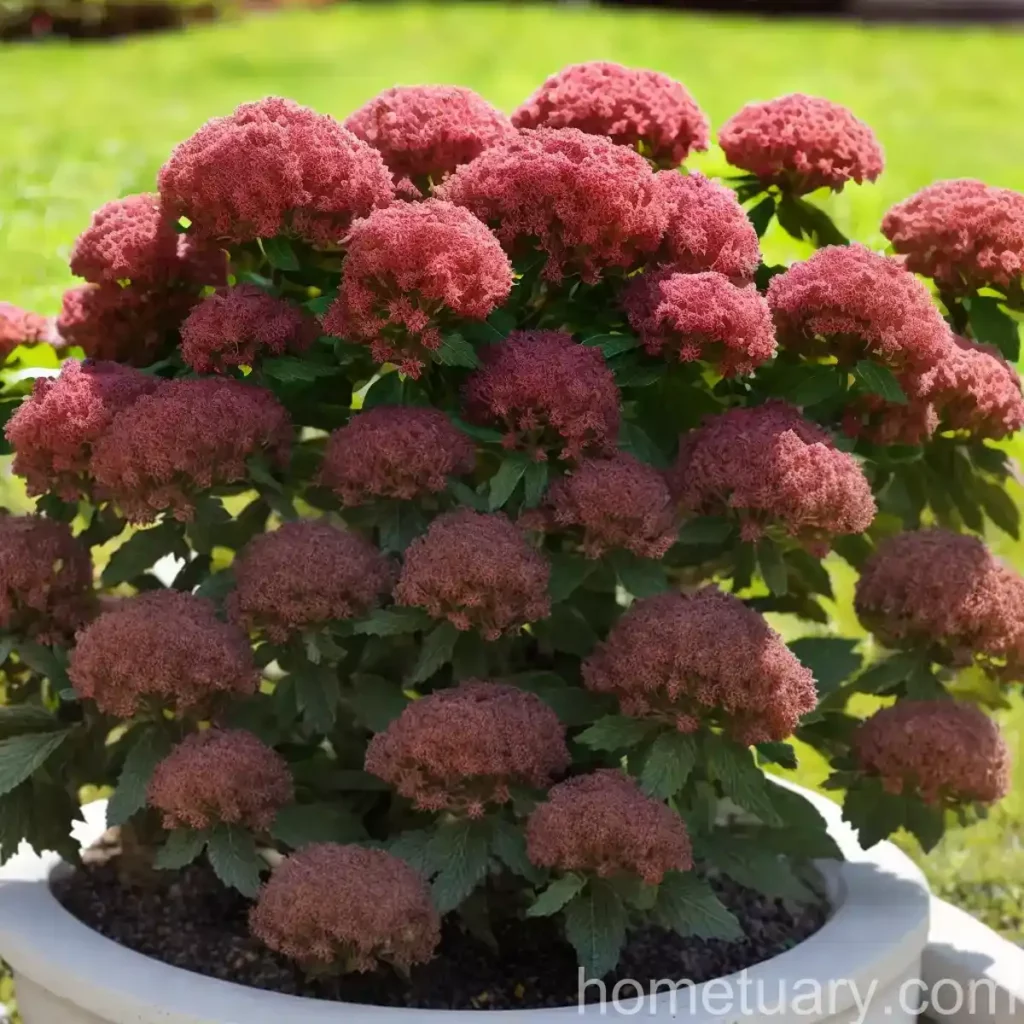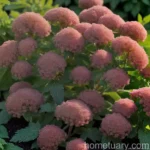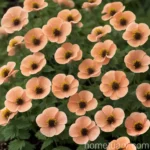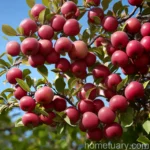Plant Spotlight: Ninebark (Physocarpus Opulifolius)
As a plant scientist, I am thrilled to delve into the captivating world of ninebark (Physocarpus opulifolius). This ornamental shrub, prized for its stunning foliage and versatile nature, has gained popularity in landscaping and horticulture. In this detailed guide, we will explore the various facets of this remarkable plant, including its cultural requirements, uses, maintenance, and fascinating traits. Whether you are a gardening enthusiast, a landscape designer, or simply intrigued by the wonders of nature, this comprehensive overview of ninebark will provide valuable insights into harnessing the potential of this exceptional species.
What is Ninebark (Physocarpus Opulifolius)?
Ninebark (Physocarpus opulifolius) is a deciduous shrub native to North America, particularly prevalent in regions such as Eastern United States and Canada. Belonging to the Rosaceae family, this resilient and adaptable plant is characterized by its multi-stemmed growth habit and exfoliating bark, which peels in multiple layers, hence the name “ninebark.” The botanical epithet “opulifolius” highlights the opulence of its foliage, describing its rich and abundant leaves.
Key Takeaways
Before delving deeper into the intricacies of ninebark, let’s summarize some key takeaways about this remarkable plant:
- Ninebark (Physocarpus opulifolius) is a versatile deciduous shrub known for its multi-seasonal interest, making it a popular choice in landscaping and horticulture.
- The plant’s attractive foliage, peeling bark, and abundant clusters of flowers make it a sought-after species for aesthetic enhancement in gardens and natural landscapes.
- It exhibits a remarkable tolerance to diverse soil types, climatic conditions, and light regimes, contributing to its adaptability in various environments.
- Pruning, propagation, and maintenance are crucial aspects of nurturing healthy and vibrant ninebark specimens, ensuring their longevity and aesthetic appeal in outdoor spaces.
- Though generally resistant to many pests and diseases, proactive monitoring and mindful care practices are essential for preserving the vitality of ninebark plants.
Now, let’s delve into the detailed facets of ninebark, encompassing its culture, uses, maintenance, and the intriguing aspects that make this species a valuable addition to gardens and landscapes.
Culture
Uses
The versatility of ninebark (Physocarpus opulifolius) extends beyond its ornamental value. This resilient shrub serves a multitude of purposes in landscape design and ecological restoration. Some of its noteworthy uses include:
-
Ornamental Landscaping: Ninebark is revered for its aesthetic allure, contributing to the visual appeal of gardens, public parks, and commercial landscapes. Its vibrant foliage, attractive peeling bark, and picturesque floral displays make it a prized ornamental specimen.
-
Wildlife Habitat: Beyond its visual appeal, ninebark provides crucial habitat and food sources for diverse fauna. The plant’s flowers attract pollinators such as bees and butterflies, while its fruits offer sustenance to birds and small mammals.
-
Soil Stabilization: With its strong root system and adaptability to various soil types, ninebark plays a pivotal role in stabilizing soil in erosion-prone areas. It is a valuable addition to native plant restoration projects and efforts to mitigate soil degradation.
-
Medicinal and Folklore Usage: Traditional indigenous communities have recognized the medicinal properties and cultural significance of ninebark. Its bark was historically used in herbal remedies for various ailments, and the plant holds symbolic and folklore-related significance in several cultures.
Water
Ninebark is known for its adaptability to different moisture levels, showcasing remarkable tolerance to both drought and periodic inundation. While established specimens can withstand dry spells and demonstrate drought tolerance, consistent watering during the initial establishment phase contributes to robust growth and vitality of young plants.
-
Watering Guidelines:
-
Established Plants: Once established, mature ninebark specimens typically thrive with minimal supplemental watering, making them suitable for xeriscapes and low-maintenance landscapes.
-
Young Plants: During the initial stages of growth, regular watering is essential to support root development and overall vigor. Aim for deep, infrequent watering sessions to promote strong root establishment.
Sunlight
Ninebark exhibits a commendable versatility in its light requirements, displaying adaptability to a range of light conditions, from full sun to partial shade. This attribute enhances its suitability for diverse landscapes and garden settings.
-
Sunlight Preferences:
-
Full Sun: While ninebark thrives in full sunlight, it also demonstrates resilience in partially shaded environments, showcasing its ability to excel in varying light conditions.
-
Partial Shade: In regions with intense summer heat, providing partial shade can benefit the plant, particularly during the hottest hours of the day. This partial shade can help mitigate potential stress and sunburn, contributing to the overall health of the shrub.
Fertilizer
The nutrient requirements of ninebark are relatively modest, and the plant generally thrives in moderately fertile soils. While it displays adaptability to various soil conditions, occasional fertilization can bolster its growth and flowering potential.
-
Fertilization Practices:
-
Timing: Apply a balanced, slow-release fertilizer in early spring before the onset of new growth. Alternatively, incorporating organic matter into the soil during planting can provide a sustainable source of nutrients for the shrub.
-
Frequency: Limit additional fertilization to once a year, as excessive application can lead to excessive vegetative growth at the expense of floral and structural development.
-
Soil Amendment: Organic mulches such as compost and well-rotted manure can serve as natural fertilizers, enhancing soil fertility while simultaneously improving moisture retention and soil structure.
Soil
Ninebark exhibits remarkable adaptability to diverse soil types, imparting resilience and versatility in various landscape settings. Whether the soil is loamy, sandy, or clayey, this hardy shrub can thrive under differing soil compositions.
-
Soil Preferences:
-
Drainage: Well-draining soil is essential, as excessive water accumulation can lead to root rot and other moisture-related issues. If the site has poor drainage, consider amending the soil with organic matter or installing drainage mechanisms to mitigate waterlogging.
-
pH Tolerance: Ninebark displays tolerance to a broad range of soil pH, indicating its adaptability to both acidic and alkaline soil conditions. Testing the soil pH can provide valuable insights into potential adjustments or specific preferences based on the plant’s requirements.
-
Soil Structure: In addition to fertility and drainage, soil structure plays a vital role in supporting the health and stability of ninebark plants. Loosening compacted soil and introducing organic amendments contribute to improved aeration and root development.
Pruning
Pruning is a pivotal aspect of maintaining the aesthetics, vigor, and structural integrity of ninebark shrubs. By adopting strategic pruning practices, gardeners can sculpt the plant, promote flowering, and manage its size to align with specific landscape requirements.
-
Pruning Guidelines:
-
Timing: The optimal time for pruning ninebark is during late winter to early spring, before the onset of new growth. This period allows for rejuvenation pruning and thinning without interfering with the plant’s blooming cycle.
-
Techniques: Employ pruning shears or loppers to remove dead, damaged, or crossing branches, promoting better air circulation and light penetration within the plant’s canopy. Additionally, selective heading cuts can shape the shrub and encourage bushier growth.
-
Rejuvenation Pruning: For mature specimens that exhibit excessive woodiness or diminished vigor, rejuvenation pruning involving the removal of older, unproductive stems revitalizes the plant, promoting fresh growth and rejuvenation.
Propagation
Propagating ninebark allows for the expansion of its presence in gardens and landscapes, facilitating the cultivation of new specimens and the preservation of specific cultivars or varieties. Several methods, including seed propagation and vegetative propagation, offer viable approaches for propagating this resilient shrub.
-
Propagation Techniques:
-
Seed Propagation: Collect mature, viable seeds from the plant in the fall and sow them in prepared seed beds or containers. Germination typically occurs in the following spring, presenting an opportunity to nurture young seedlings before transplanting them into desired locations.
-
Softwood Cuttings: Take softwood cuttings from vigorous, healthy stems during the growing season, typically in late spring to early summer. These cuttings, treated with rooting hormone and placed in well-draining, moist substrate, can develop into new plants.
-
Hardwood Cuttings: Obtaining hardwood cuttings in late winter or early spring and propagating them via insertion into propagation medium, under controlled conditions, can yield successful root development and subsequent establishment of new plants.
Container Popularity
The adaptability and aesthetic appeal of ninebark make it a popular choice for container gardening, enhancing outdoor spaces with its vibrant foliage and distinctive growth habits. Cultivating ninebark in containers offers several advantages, including ease of maintenance, portability, and the ability to introduce this ornamental shrub to diverse settings.
-
Container Gardening Benefits:
-
Versatile Placement: Ninebark in containers can adorn patios, decks, entrances, and other outdoor areas, accentuating the visual appeal and lending a touch of natural elegance to urban and suburban environments.
-
Seasonal Transitions: Containerized ninebark allows for seasonal transitions, enabling gardeners to relocate the plants as per changing environmental conditions, sunlight availability, or specific design preferences.
-
Space Management: In confined spaces or areas with soil limitations, cultivating ninebark in containers provides an opportunity to enjoy the plant’s attributes without impeding landscape functionality or altering existing soil structures.
Common Diseases
While generally resilient, ninebark is susceptible to certain diseases that can compromise its health and vitality. Proactive monitoring, early detection, and effective management strategies are essential in combating potential diseases and safeguarding the well-being of this ornamental shrub.
Disease Diagnosis
Several diseases can affect ninebark, manifesting in distinctive symptoms and impacts on the plant’s appearance and vigor. Key diseases to monitor and address include:
- Powdery Mildew (Sphaerotheca)
- Septoria Leaf Spot (Septoria physocarpi)
- Cankers (Various Fungi)
- Phytophthora Root Rot (Phytophthora spp.)
Management and Prevention
Mitigating the incidence and impact of diseases on ninebark involves the implementation of preventive measures, cultural practices, and, if necessary, targeted treatments to address specific pathogens. Some strategies include:
-
Pruning Practices: Proper spacing and pruning to facilitate air circulation and reduce humidity around the plant, minimizing conditions conducive to fungal diseases such as powdery mildew and leaf spot.
-
Sanitation: Removal and disposal of affected plant debris and fallen leaves, reducing the potential for disease overwintering and reinfection in subsequent growing seasons.
-
Fungicidal Treatments: As a supplemental measure, application of fungicidal agents following the manufacturer’s recommendations can provide protective and curative effects, mitigating the impact of fungal diseases on ninebark.
Common Pests
While relatively resistant to many pests, ninebark can occasionally encounter challenges posed by certain insects and arthropods. Understanding the signs of infestation and adopting appropriate management strategies are crucial in preserving the plant’s vitality and aesthetic appeal.
Key Pests
- Aphids
- Spider Mites
- Scale Insects
- Borers (e.g., Flatheaded Borers)
Integrated Pest Management (IPM)
Implementing an integrated approach to pest management ensures a comprehensive and sustainable strategy for addressing pest-related issues while minimizing environmental impact and promoting overall plant health. Key components of IPM for managing pests include:
-
Monitoring: Regular inspection of the plant for signs of pest activity, including stippling, webbing, or visible insects, enabling prompt intervention as needed.
-
Biological Controls: Encouraging natural predators such as ladybugs, lacewings, and predatory mites, which can help regulate pest populations and provide a natural balance in the ecosystem.
-
Cultural Practices: Maintaining overall plant vigor through proper watering, pruning, and fertilization, reducing susceptibility to pest infestations and enhancing the plant’s natural resilience.
Botanist’s Tips
As a plant scientist deeply immersed in the study and appreciation of botanical diversity, I am excited to share some valuable tips and insights into the cultivation and appreciation of ninebark (Physocarpus opulifolius). Leveraging these expert recommendations can enhance your success in nurturing and enjoying the splendor of this remarkable shrub.
-
Selecting Cultivars: Consider diverse cultivars and varieties of ninebark, each offering distinctive foliage, flower colors, and growth habits. By exploring the array of options available, you can tailor your selections to align with specific design preferences and landscape requirements.
-
Seasonal Interest: Embrace the multi-seasonal appeal of ninebark, focusing on its attributes beyond the flowering phase. The vibrant foliage, exfoliating bark, and autumn coloration contribute to its year-round visual impact, enhancing landscape dynamics throughout the seasons.
-
Companion Planting: Explore harmonious companions for ninebark, integrating compatible plants with complementing colors, textures, and growth habits. Thoughtful combinations can create visually appealing and ecologically beneficial ensembles in garden and landscape settings.
Fun Facts
Exploring the captivating world of ninebark unveils various intriguing and remarkable facets that elevate its significance in horticulture, ecology, and cultural lore. Ponder upon these fascinating facts to deepen your appreciation for this versatile and resilient plant.
-
Historical Uses: Indigenous communities historically utilized ninebark for medicinal purposes, harnessing the healing properties of its bark in herbal remedies. This deep-rooted cultural significance underscores the plant’s historical and ecological value.
-
Natural Dye: The inner bark of ninebark contains tannins, which have been historically employed as a natural dye, imparting a range of hues from red to brown. This utilization reflects the plant’s broader utility beyond its ornamental and ecological dimensions.
-
Wildlife Benefits: Beyond its visual allure, ninebark serves as a valuable wildlife plant, offering nectar to pollinators, fruits for avian species, and cover for small animals. Its contribution to ecological food webs underscores its importance in supporting diverse fauna.
-
Folklore and Symbolism: In some cultures, ninebark holds symbolic significance and is associated with folklore and traditional narratives, demonstrating its enduring cultural resonance and connections to human heritage.
Links to External Resources
To expand your knowledge and gain comprehensive insights into ninebark (Physocarpus opulifolius), I recommend exploring the following reputable resources:
- Native Plant Database – Lady Bird Johnson Wildflower Center
- Plant Care Guides – Royal Horticultural Society
- Integrated Pest Management Resources – University of California Statewide Integrated Pest Management Program
I hope this comprehensive guide has provided invaluable information and inspiration for your journey into the realm of ninebark. Whether you are a seasoned horticulturist or an enthusiastic gardening aficionado, the enduring charm and adaptability of this captivating shrub are sure to illuminate your outdoor spaces with natural splendor and vitality. Happy gardening, and may your encounters with ninebark yield enduring beauty and ecological richness!















